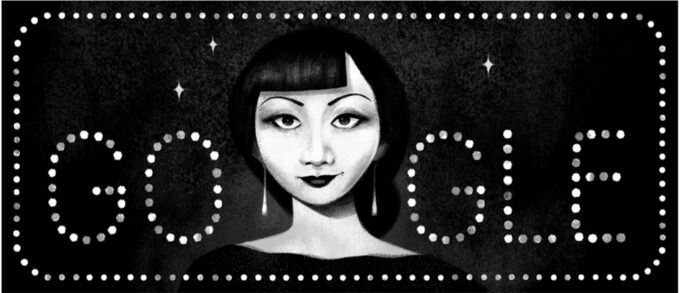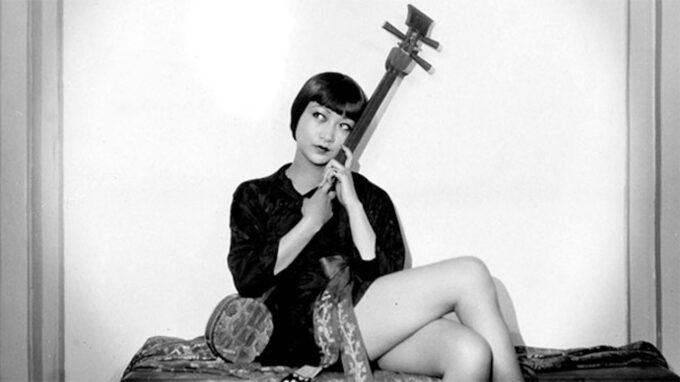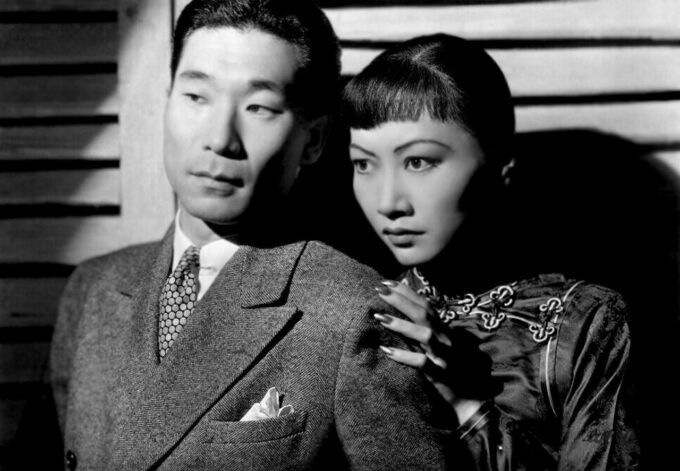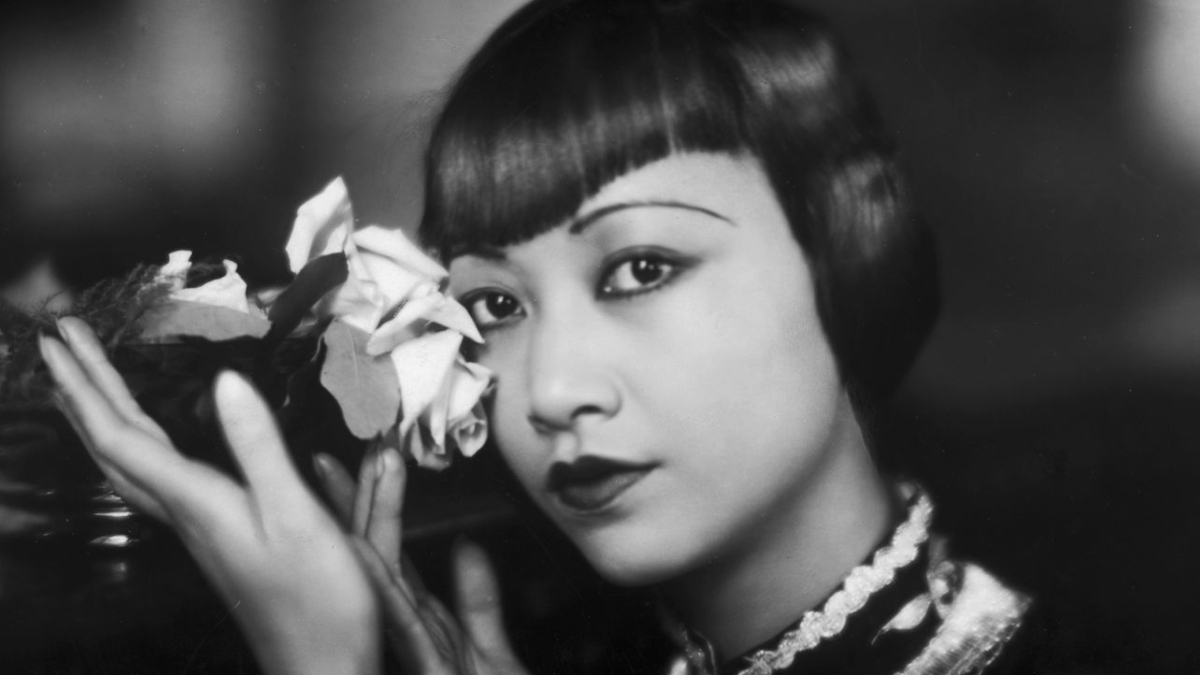Written By: Nathan Liu
On January 22, 2020, Google unveiled its daily doodle: the face of Chinese American movie star, Anna May Wong. In May of that same year, Netflix released the Ryan Murphy miniseries, “Hollywood,” an alternate history in which Wong wins an Oscar. Later that month, PBS aired a five-part documentary, “Asian Americans,” with an entire section dedicated just to Wong’s story. And not long after, Academy Award-winning director Damien Chazelle announced that his next project would be “Babylon,” a period piece about classic Hollywood featuring, you guessed it, Anna May Wong. All together, these four things brought Wong greater notoriety than she’d seen in years.
All of these things — the doodle, the miniseries, the documentary — cover the basics of her life. She was born in Los Angeles Chinatown to second-generation parents, started acting in silent films when she was young, was frequently typecast as either a submissive “China Doll” or vicious “Dragon Lady,” and was passed over for the leading Chinese role of O-Lan in MGM’s “The Good Earth” in favor of German actress Luise Rainer in yellow face. Those details comprise the basic truth of her story. But none of these things — the doodle, the miniseries, the documentary — really delved deeper into her personal life, career, or ambitions. And none of them explains why Wong is still remembered all these years later.
All these historians and filmmakers felt the need to shine a light on Wong, but only on one part of her story: her getting passed over for “The Good Earth.” Which is egregious, especially when you remember that Luise Rainer won Best Actress for her yellow face portrayal. But that doesn’t change the fact that these people seemed more interested in talking about something that Wong didn’t do, as opposed to anything she did.

Wong wasn’t just some passive observer who took whatever offensive roles Hollywood threw her way. She was an intelligent, business-savvy self-advocate who was very vocal about her displeasure with type-casting, and did everything she could to expand her career. I’m convinced that this staunch self-advocacy is a huge reason why, all these years later, she’s still discussed and revered. After all, there were other Asian actresses performing stereotypical roles in Hollywood at that time — such as Lotus Long and Tsuru Aoki — but no one has made Google doodles or documentaries out of them.
Wong was never shy when it came to voicing her displeasure with typecasting. In a 1933 Film Weekly interview with Doris Mackie, for instance, she stated, “‘Why is it that the screen Chinese is always the villain?’ … ‘And so crude a villain. Murderous, treacherous, a snake in the grass. We are not like that.’ … ‘I was so tired of the parts I had to play.’”
She recognized that she couldn’t just wait for Hollywood to become more tolerant. If she wanted better roles, she’d have to make them. That’s why in 1924, she signed a deal creating Anna May Wong Productions, a short-lived film company designed to create movies based on Chinese myths, according to Anthony B Chan’s biography. And when Hollywood failed to give her good roles in the late 1920s and early 1930s, she went to Europe and made several films there, like “Piccadilly” in England, and “Pavement Butterfly” in Germany (both 1929).
Even after the major disappointment of “The Good Earth,” Wong continued to advocate for herself on all her films. In the late 1930s, she made a series of B-movies at Paramount, and according to Chan, she actively worked with the screenwriters to remove racist or stereotypical content. This resulted in some true hidden gems, including “Daughter of Shanghai” (1937), a crime thriller about a Chinese American woman (Wong) teaming up with an Asian American G-man (Philip Ahn) to take down human traffickers. The film was truly groundbreaking for its time, and was actually inducted into the Library of Congress National Film Registry in 2006.

Beyond her staunch refusal to just accept pigeonholing, something else that, in my opinion, accounts for Wong’s continued relevance today is her complicated relationship with the Chinese and Chinese American communities. Despite being third-generation, Wong was viewed as a perpetual foreigner in the States. She was born in 1905, when the Chinese Exclusion Act — a law that barred any Chinese person from ever attaining citizenship — was still in effect. And unfortunately for her, she wasn’t accepted in China either.
As Colgate University professor Graham Russell Gao Hodges notes in his biography of the actress, “Anna May Wong: From Laundryman’s Daughter to Hollywood Legend,” the Nationalist government hated the stereotypical roles she played, claiming that they brought shame to the nation. According to Hodges, their dislike of her was so intense that when she was visiting China in 1936, and was about to get off the boat, someone in the crowd yelled, ”Down with Wong Liu Tsong [her Chinese name] — the stooge that disgraces China.”
That said, there were Chinese intellectuals who praised and defended Wong. As Karen Leong points out in her book “The China Mystique: Pearl S. Buck, Anna May Wong, Mayling Soong, and the Transformation of American Orientalism,” the University of Peking actually awarded the actress an honorary doctorate in 1932. And Wong herself frequently expressed a desire to learn more about her heritage. According to Hodges, the reason why she made that ill-fated trip to China in 1936 was to visit family, learn Chinese Opera, and reconnect with her roots. On the day she left, she told the San Francisco Chronicle “… for a year, I shall study the land of my fathers. Perhaps upon my arrival, I shall feel like an outsider. Perhaps instead, I shall find my past life assuming a dreamlike quality of unreality.”

Wong’s sense of displacement in both China and the United States is something that modern Asian Americans can sadly relate to. While most thankfully don’t have to deal with the intense scrutiny that she did, her sense of not belonging anywhere, of being caught between worlds, is an all too familiar phenomenon. And it’s something that makes her story just as relevant today as it was back then.
So why do we remember Anna May Wong? Is it because we feel sorry for her? Is it because we, as modern Asian Americans, recognize her pain and struggles in ourselves? Maybe. But that’s not the only reason why. Hardship is a part of almost every Asian American story, especially the story of Asian American women. But so few of those tragic, worthy narratives are remembered and written about. Wong’s is, and that’s because, unlike so many other people, who suffered and were pushed to the margins, she refused to be silent.
At a time when most performers of color were happy to just take the money and keep their heads down — as Hattie McDaniel did when she stated “I’d rather play a maid and earn $700 a week than be a maid and make $7” — Wong loudly decried the racism she was experiencing. When Hollywood wouldn’t cast her, she went to markets where she knew her talents would be valued. And when she was “granted” the chance to appear on the American screen, she used her clout as a star to force the writers and directors to do better. She knew what she was worth, and made sure everyone around her did too. And what could be more admirable, more worthy of remembrance, than that?

